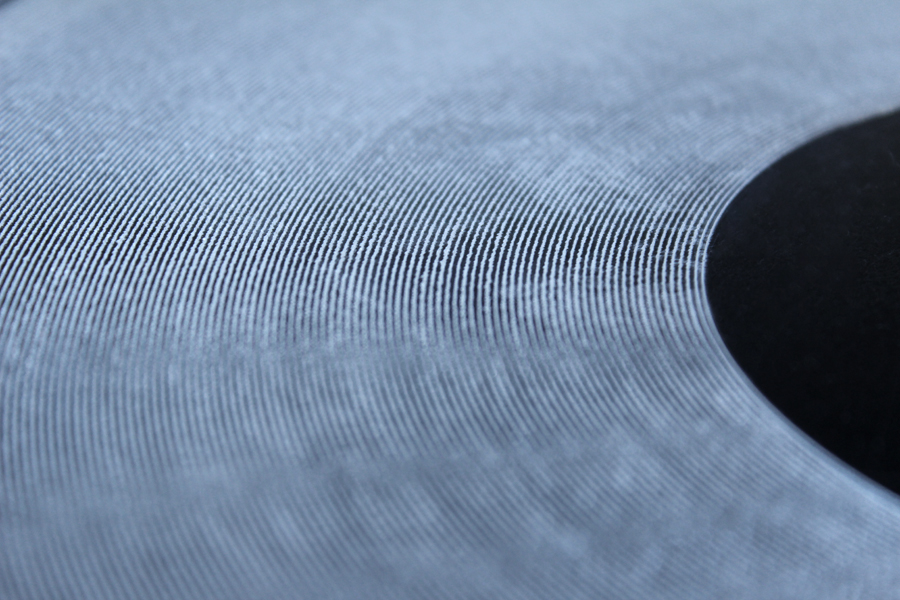 [Image: Courtesy USGS.]
[Image: Courtesy USGS.]
I love the fact that the U.S. Geological Survey had to put out a press release explaining what some people in rural Wisconsin might see in the first few weeks of January: a government helicopter flying “in a grid pattern relatively low to the ground, hundreds of feet above the surface. A sensor that resembles a large hula-hoop will be towed beneath the helicopter,” the USGS explains—but it’s not some conspiratorial super-tool, silently flipping the results of voting machines. It’s simply measuring “tiny electromagnetic signals that can be used to map features below Earth’s surface,” including “shallow bedrock and glacial sediments” in the region.
Of course, the fictional possibilities are nevertheless intriguing: government geologists looking for something buried in the agricultural muds of eastern Wisconsin, part Michael Crichton, part Stephen King; or CIA contractors, masquerading as geologists, mapping unexplained radio signals emanating from a grid of points somewhere inland from Lake Michigan; or a rogue team of federal archaeologists searching for some Lovecraftian ruin, a lost city scraped down to its foundations by the last Ice Age, etc. etc.
In any case, the use of remote-sensing tools such as these—scanning the Earth to reveal electromagnetic, gravitational, and chemical signatures indicative of mineral deposits or, as it happens, architectural ruins—is the subject of a Graham Foundation grant I received earlier this autumn. That’s a project I will be exploring and updating over the next 10 months, combining lifelong obsessions with archaeology and ruins (specifically, in this case, the art history of how we depict destroyed works of architecture) with an interest in geophysical prospecting tools borrowed from the extraction industry.
In other words, the same remote-sensing tools that allow geological prospecting crews to locate subterranean mineral deposits are increasingly being used by archaeologists today to map underground architectural ruins. Empty fields mask otherwise invisible cities. How will these technologies change the way we define and represent architectural history?
 [Image: Collage, Geoff Manaugh, for “Invisible Cities: Architecture’s Geophysical Turn,” Graham Foundation 2020/2021; based on “Forum Romano, Rome, Italy,” photochrom print, courtesy U.S. Library of Congress.]
[Image: Collage, Geoff Manaugh, for “Invisible Cities: Architecture’s Geophysical Turn,” Graham Foundation 2020/2021; based on “Forum Romano, Rome, Italy,” photochrom print, courtesy U.S. Library of Congress.]
For now, I’ll just note another recent USGS press release, this one touting the agency’s year-end “Mineral Resources Program Highlights.”
Included in the tally is the “Earth MRI” initiative—which, despite the apt medical-imaging metaphor, actually stands for the “Earth Mapping Resource Initiative.” From the USGS: “When learning more about ancient rocks buried deep beneath the surface of the Earth, it may seem surprising to use futuristic technologies flown hundreds of feet in the air, but that has been central to the USGS Earth Mapping Resource Initiative.”
 [Image: A geophysical survey of northwestern Arkansas, courtesy USGS.]
[Image: A geophysical survey of northwestern Arkansas, courtesy USGS.]
What lies below, whether it is mineral or architectural, is becoming accessible to surface view through advanced technical means. These new tools often reveal that, beneath even the most featureless landscapes, immensely interesting forms and structures can be hidden. Ostensibly boring mud plains can hide the eroded roots of ancient mountain chains, just as endless fields of wheat or barley can stand atop forgotten towns or lost cities without any hint of the walls and streets beneath.
The surface of the Earth is an intermediary—it is media—between us and what it disguises.
(See also, Detection Landscapes and Lost Roads of Monticello.)

 [Image: “
[Image: “ [Image: “
[Image: “ [Image: “
[Image: “ [Image: Like the rings of Saturn, from “
[Image: Like the rings of Saturn, from “